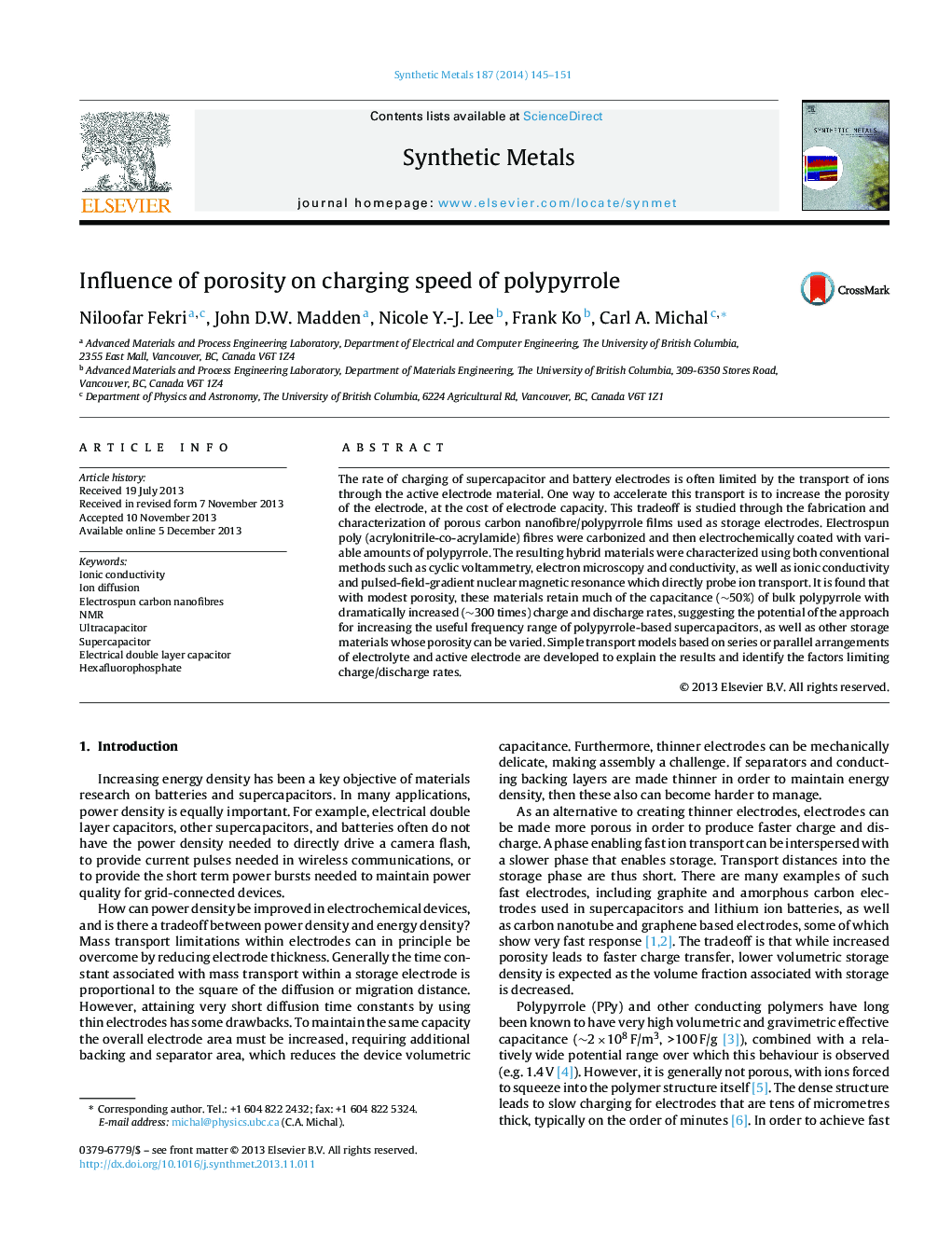| کد مقاله | کد نشریه | سال انتشار | مقاله انگلیسی | نسخه تمام متن |
|---|---|---|---|---|
| 1441142 | 1509390 | 2014 | 7 صفحه PDF | دانلود رایگان |
• We have electrochemically grown polypyrrole onto electrospun carbon nanofibres.
• The capacitances of the hybrid films scales linearly with polypyrrole volume fraction.
• The ionic conductivity is orders of magnitude greater than that of bulk polypyrrole.
• These hybrid films show promise as high capacity and high rate electrodes.
• Ionic conductivity, NMR and voltammetry are used to establish rate determining factors.
The rate of charging of supercapacitor and battery electrodes is often limited by the transport of ions through the active electrode material. One way to accelerate this transport is to increase the porosity of the electrode, at the cost of electrode capacity. This tradeoff is studied through the fabrication and characterization of porous carbon nanofibre/polypyrrole films used as storage electrodes. Electrospun poly (acrylonitrile-co-acrylamide) fibres were carbonized and then electrochemically coated with variable amounts of polypyrrole. The resulting hybrid materials were characterized using both conventional methods such as cyclic voltammetry, electron microscopy and conductivity, as well as ionic conductivity and pulsed-field-gradient nuclear magnetic resonance which directly probe ion transport. It is found that with modest porosity, these materials retain much of the capacitance (∼50%) of bulk polypyrrole with dramatically increased (∼300 times) charge and discharge rates, suggesting the potential of the approach for increasing the useful frequency range of polypyrrole-based supercapacitors, as well as other storage materials whose porosity can be varied. Simple transport models based on series or parallel arrangements of electrolyte and active electrode are developed to explain the results and identify the factors limiting charge/discharge rates.
Figure optionsDownload as PowerPoint slide
Journal: Synthetic Metals - Volume 187, January 2014, Pages 145–151
